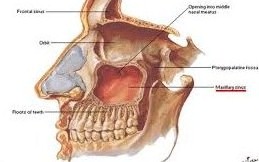Development of maxillary process and medial frontal process in medial elongation of central portion:
- A. True.
- B. False.
The statement "Development of maxillary process and medial frontal process in medial elongation of central portion" is false.
Here's why:
- Central portion elongation:
This term is generally not used in the context of craniofacial development. Cranial bones develop through the ossification of mesenchymal condensations called embryonic processes. There are specific processes involved in the formation of the maxilla and frontal bone, but "central portion" is not a recognized terminology.
- Maxillary and medial frontal processes:
These are two distinct embryonic processes that contribute to the formation of different facial structures. The maxillary process forms the upper jaw and parts of the cheekbone and palate. The medial frontal process, also known as the frontonasal process, contributes to the formation of the forehead, nose, and upper lip. They do not directly contribute to the elongation of any central portion.
- Elongation of facial bones:
Facial bone growth occurs primarily through endochondral ossification at specific growth centers. For example, the maxilla elongates posteriorly through the pterygopalatine suture. The mechanisms of elongation involve cartilage growth and subsequent ossification, not the involvement of the maxillary or medial frontal processes.
Therefore, the statement "Development of maxillary process and medial frontal process in medial elongation of central portion" is inaccurate and misleading. It is important to use precise anatomical terminology and established developmental mechanisms when discussing craniofacial development.
